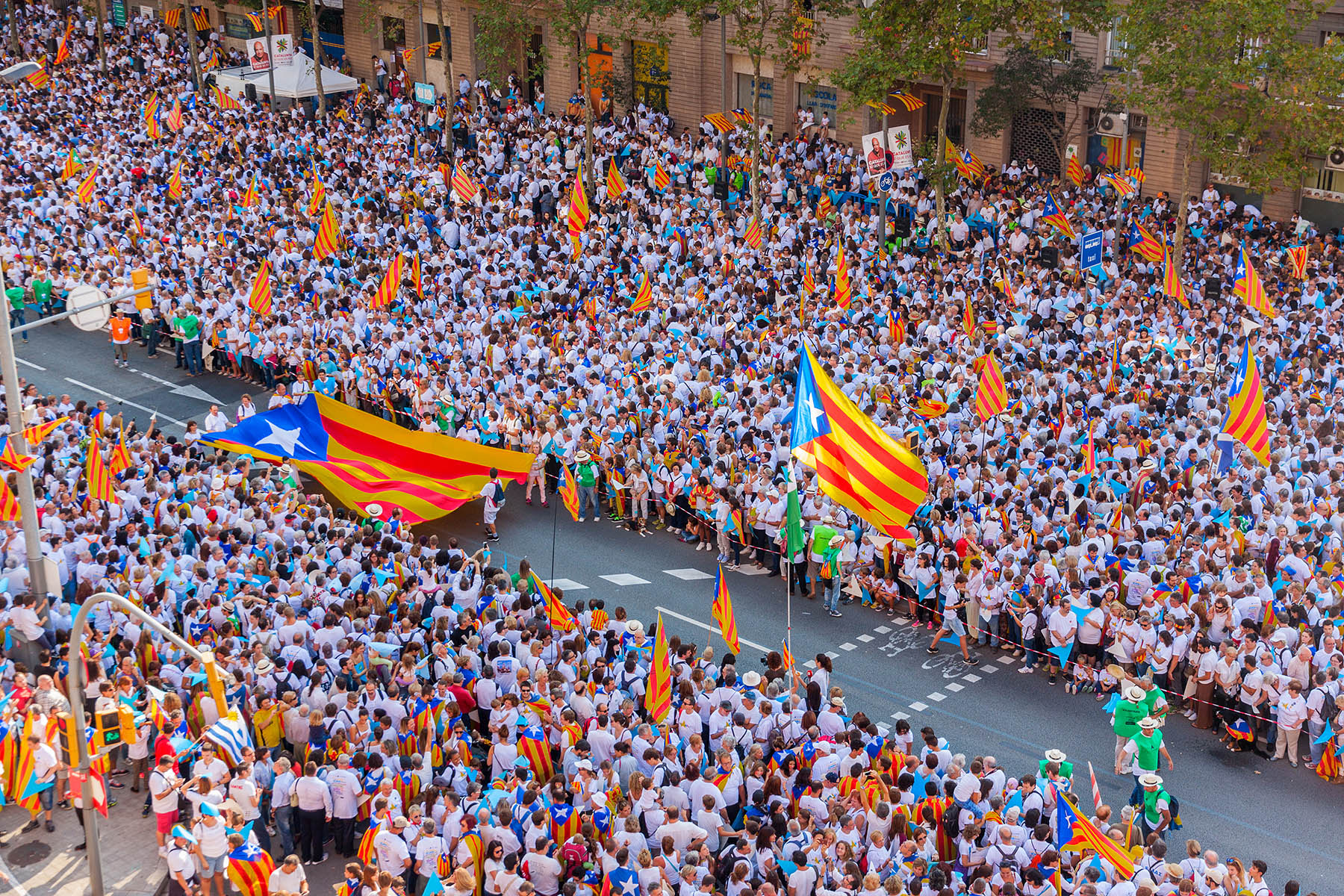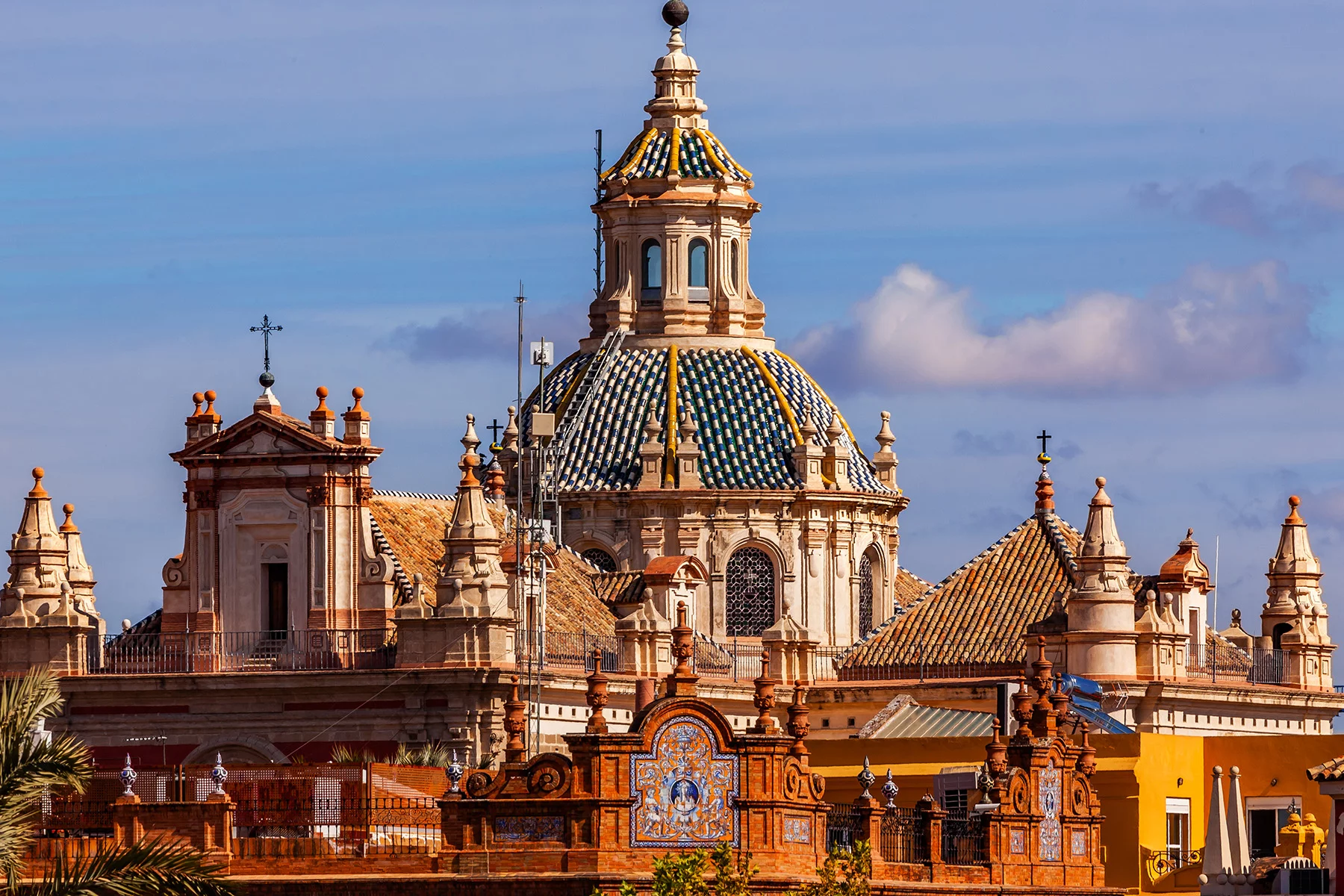You might be surprised how many unique traditions can be found in Spain during the Christmas season. It’s an exciting time for expats living in the country to experience Spanish culture during one of the most vibrant and coziest times of the year. When it comes to celebrating Christmas in Spain, you’ll get to hear traditional villancicos and try all the turrón and cava your heart desires.
Here’s what you need to know:
- 1. El Gordo (The Christmas lottery)
- 2. Nochebuena (Christmas Eve)
- 3. Nativity scenes (Belenes)
- 4. Caga tió (The pooping log)
- 5. Midnight mass (La misa del gallo)
- 6. Christmas Day feasts
- 7. Villancicos (Spanish Christmas carols)
- 8. El Día de San Esteban (St. Stephen’s Day – December 26)
- 9. Holiday sweets or dulces
- 10. Festive street markets and fairs
1. El Gordo (The Christmas lottery)
One of the most well-known Spanish Christmas traditions is a massive national lottery held three days before Christmas Day, the 22nd of December. A staggering 90% of the population take part in the world’s most famous and ‘fattest’ lottery, El Gordo. Hardly surprising with prize money totaling EUR 1.8 billion.

On the morning of the draw, any local bar is the place to be, where everyone will be glued to the TV screen, clutching their décimas and participaciones (more affordable fractions of full numbers) as the children of the San Ildefonso orphanage pull out and sing-song the winning numbers.
2. Nochebuena (Christmas Eve)
Most Spaniards rate Christmas Eve as the most important of all the end-of-the-year holiday feast days. It’s a time for family gatherings and elaborate dinners, featuring traditional dishes like seafood and lamb.
It’s the only time, other than summer siesta hours, when streets are deserted and bars and restaurants close. But don’t be fooled, this is only because the action has simply moved indoors. On this “good night” the latest-suppering country in the world goes for gold, with most Christmas dinners starting quite late into the evening.
After Christmas Eve dinner in Spain, some families will attend midnight mass (la misa del gallo). For others, the evening continues with music, carols, and exchanging small gifts. In some households, children place figurines in the nativity scene to represent the arrival of baby Jesus that night.
3. Nativity scenes (Belenes)
Nativity scenes are the cornerstone of traditional Christmas decorations in Spain. Belén actually means Bethlehem, and while some show just the manger scene, others form elaborate tableaux of the town and its environs.

Many families have a belén box that goes back decades. These feature lovingly collected (perhaps half-broken) figurines, lumps of papier-mâché, bits of twig and silver paper, mirrors, corks, seeds, and grass or hay. All are ingeniously employed to recreate streams and bridges, paths and hills, carpenters’ workshops, fields of wheat, and so on.
Ironically, this most traditional of Spanish Christmas customs only goes back to the 18th century and was imported from Naples by the first wife of Carlos III. These were originally made of porcelain, and later baked clay and plaster.
Apart from the main players, you can buy a whole range of village extras, including the kids’ favorite, el cagón or, in Catalan and Valenciano, el caganer (“the crapper”). What a country lad with his trousers round his ankles has to do with the holy scene is anybody’s guess.
4. Caga tió (The pooping log)
Christmas in Catalunya would be incomplete without caga tió. In this tradition, children “feed” a log, which “poops” out gifts on Christmas Eve after being beaten with sticks. It’s a charming Christmas Eve custom that involves singing special songs and beating on a blanket-covered log (the family tió) until the presents pop out.
The ritual of feeding the log begins on the 8th of December (the Feast of Immaculate Conception) and ends on Christmas Eve. Children feed tió by placing food in the front of the log before they go to sleep at night. Then, they’ll wake up to find that the food has miraculously disappeared, sometimes leaving behind crumbs or orange peels as proof.
5. Midnight mass (La misa del gallo)
Attending this Christmas Eve service is an important religious event for many, symbolizing the birth of Jesus. The Spanish name (la misa del gallo, meaning “rooster mass”) comes from the legend that a rooster was the first animal to announce the birth of Christ, crowing at midnight on the holy night.
This mass is held in Catholic churches across Spain and is one of the most solemn and meaningful events of the Christmas season. In some regions, it even includes massive bonfires outside the church to celebrate the start of Christmas Day.
6. Christmas Day feasts
Christmas is a grim a time for pigs. One false turn in Carrefour and you’ll find yourself suddenly hemmed in by ceilings of swinging forelegs and hind legs, interspersed with extra-large, extra-phallic chorizos. Of all the festive foodstuffs it is the jamón, lovingly mounted on its cutting stand and covered with a damp cloth, without which the Spanish Christmas feast would never be complete.

Gambas at Spanish Christmas means dinner plates piled high with the biggest of prawns, langoustines, crayfish, and other well-endowed relations. And that’s just the pre-starter!
After the shellfish comes a soup of some kind, then for the main course there’s turkey, fish, goat, or lamb. After this, there might be a light dessert. Finally – to aid digestion – out comes the muscatel and frutos secos: almonds, hazelnuts, dates, apricots, and figs. If you’re a fig fan, don’t miss pan de higos – a thick nutty cake packed solid the fruit.
7. Villancicos (Spanish Christmas carols)
When it comes to villancicos in Spain, forget what you know about traditional Christmas carols. Think hand-clapping, foot-stomping, pub-type sing-a-longs and you’ve captured the essence of Spanish carol singing.
Villancicos traditionally take place around the belén, with everyone banging on a medley of home-made instruments. These instruments include an anís bottle and spoon, mortar and pestle, paper comb, jars of lentils, and a zambomba. The last is an upturned bottomless flower-pot with a drum-skin stretched across one end and a pole through the middle.
Probably the catchiest of all villancicos is the ubiquitous Mira cómo beben los peces en el río (Look how the fish are drinking in the river).
8. El Día de San Esteban (St. Stephen’s Day – December 26)
St. Stephen’s Day is celebrated as an official holiday in Catalonia and some other regions of Spain on December 26th. Here, it’s marked by family gatherings and a feast that often features cannelloni stuffed with leftovers from Christmas dinner. It’s a day for extended families to come together and continue the festive spirit with traditional food and merriment.

In other parts of Spain, however, people often return to work and businesses reopen. It’s simply the day after Christmas, not Boxing Day or 2nd Day of Christmas as in other parts of Europe.
9. Holiday sweets or dulces
In Spain, Christmas is a time of joyful feasting, and sweets hold a central place in the celebrations. One of the most iconic holiday treats is turrón, a nougat-like confection made from almonds, honey, sugar, and egg whites. It comes in various textures, from the crunchy turrón duro to the soft and chewy turrón blando.
Another festive favorite is polvorones, crumbly shortbread cookies dusted with powdered sugar, often flavored with cinnamon or lemon. Mantecados, similar to polvorones but with a denser, melt-in-the-mouth texture, are also staples during the holiday season.
Other holiday indulgences include mazapán (marzipan), often shaped into festive figures, and pestiños, deep-fried pastries coated in honey or sugar.

Sweets usually come with a glass of sparkling cava: Catalunya’s gift to the world. It’s an affordable, drinkable sparkling white wine. Partiers uncork bottles of the stuff at Christmas parties and gatherings throughout Spain. In Catalunya, festive cava consumption reaches unthinkable oh-no-please-not-another-glass/bottle/case proportions.
10. Festive street markets and fairs
Spanish cities come alive with Christmas markets offering artisanal gifts, food, and holiday cheer, illuminated by sparkling lights.
Starting in late November or early December, Spanish Christmas markets fill town squares and streets with the warm glow of lights. These markets, known as mercados de navidad or ferias navideñas, are an essential part of the holiday season. They usually offer a mix of traditional crafts, seasonal foods, and festive entertainment.
One of the most famous markets is La Feria de Santa Llúcia in Barcelona, near the iconic Gothic Cathedral. In Madrid, another beloved destination is the Plaza Mayor Christmas Market.












